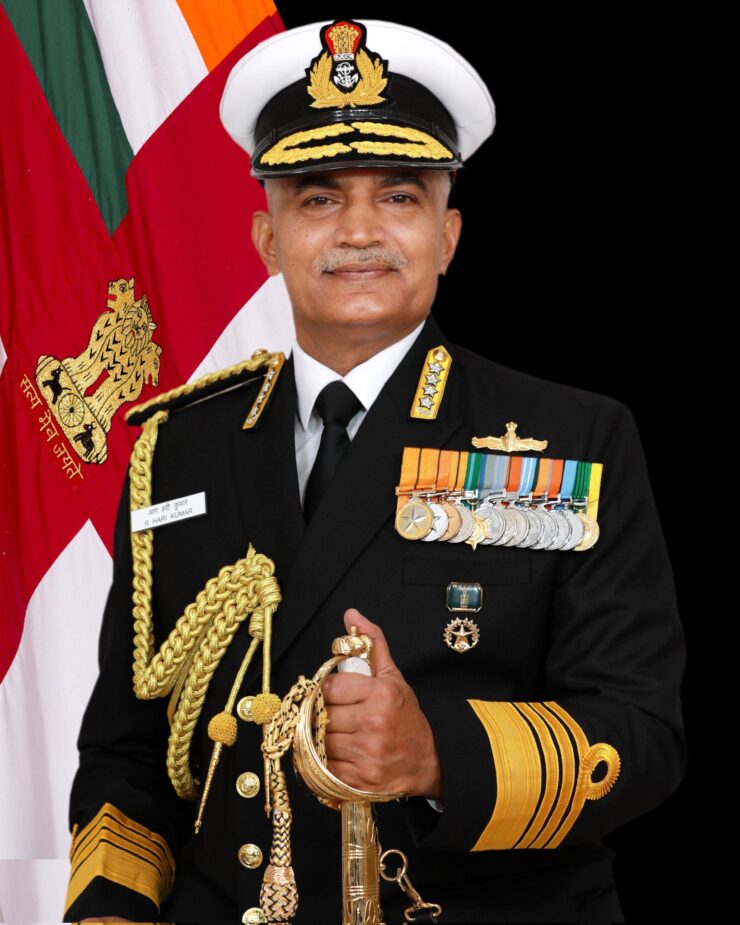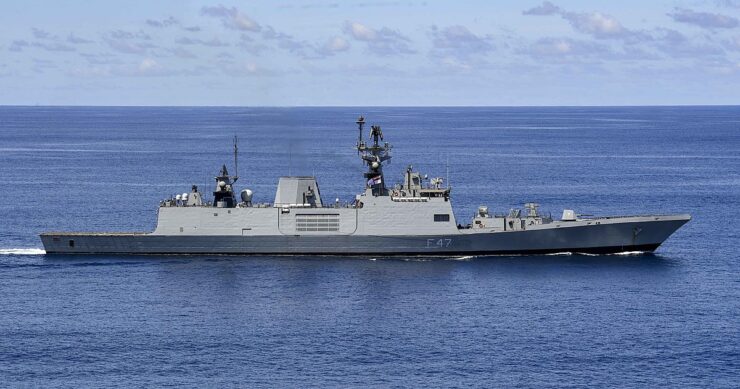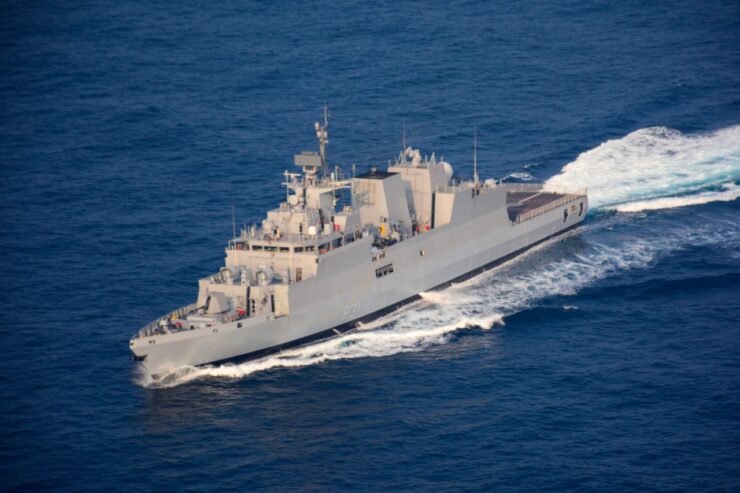“Only those nations have been successful in gaining dominance across the world, whose Navies have been strong and I am happy to say that our Navy is playing an important role in our maritime and national security,” said Defence Minister Rajnath Singh.
 As the Indian Navy celebrates Navy Day on December four, it has indeed been playing a major role in the region and stepping up its position to guard the 7516.6 Km coast line and having 1197 offshore islands and an Exclusive Economic Zone of 2,305,143 Sq. Km which is rich in mineral resources. The Navy indeed has a major role to play in guarding this zone.
As the Indian Navy celebrates Navy Day on December four, it has indeed been playing a major role in the region and stepping up its position to guard the 7516.6 Km coast line and having 1197 offshore islands and an Exclusive Economic Zone of 2,305,143 Sq. Km which is rich in mineral resources. The Navy indeed has a major role to play in guarding this zone.
The four main roles for the Indian Navy are 1. Military Role 2. Diplomatic Role 3. Constabulary Role 4. Benign Role.
The role of the Navy in the guarding the nation’s maritime boundary assumes importance in the wake of the ongoing border tension with China whose Peoples Liberation Army Navy (PLAN) is rated as the world’s second largest with Indian Navy ranking seventh in the world.
In the prevailing scenario, the Navy Chief Admiral R. Hari Kumar who took charge as the 25th Chief of Naval Staff (CNS) on November 30 has indeed a key role to play. His taking charge comes at a time when there is a thinking of having a Theatre Command which is to see enhanced collaboration among the three wings of the armed forces.
With the Chinese having a naval base in Djibouti and Chinese ships foraying regularly into the Indian Ocean and sometimes close to the Indian territorial waters, a strong Navy indeed becomes imperative.
In keeping with the motto “Combat Ready, Credible and Cohesive,” the Navy has been playing a key role in guarding the maritime frontiers of the country. The celebration is to honour and recognise the achievements and role of the Indian Navy to the nation. It is a well-balanced three-dimensional force, capable of operating above, on, and under the surface of the oceans and safeguard national interests. Its objective is also to improve its circumstances in the Indian Ocean Zone.
Indian Navy’s approach on interoperability with other navies of the world through joint bilateral and multilateral exercises saw it participating in a number of maritime exercises throughout the year 2021. As a first responder and a leading Navy, it has helped in projecting India’s soft power abroad in a positive light and also reflect India’s expanding sphere of influence and capacity to shape events abroad.
Recently in October 2021, Indian Navy participated in joint exercises with The Carrier Strike Group (CSG21) of the United Kingdom, headed by 65,000-tonne HMS Queen Elizabeth in the Indian Ocean. The focus was on interoperability and communication comparability between the two navies for future joint operations.
 Ravi Nirgudkar, Managing Director – India, Sri Lanka, Bangladesh, BAE Systems, said: “BAE Systems offers its congratulations to the Indian Navy as it celebrates its achievements on Navy Day 2021. This is a special year for the UK and India, following the highly successful visit of the Carrier Strike Group in October which further enhanced the ties between our two countries. BAE Systems was proud to have been at the heart of the CSG visit and we look forward to building our relationship with the Indian Navy and co-creating for a self-reliant India.”
Ravi Nirgudkar, Managing Director – India, Sri Lanka, Bangladesh, BAE Systems, said: “BAE Systems offers its congratulations to the Indian Navy as it celebrates its achievements on Navy Day 2021. This is a special year for the UK and India, following the highly successful visit of the Carrier Strike Group in October which further enhanced the ties between our two countries. BAE Systems was proud to have been at the heart of the CSG visit and we look forward to building our relationship with the Indian Navy and co-creating for a self-reliant India.”
A multi-dimensional and networked combat force with a manpower of over 65,000 and 55,000 in the reserve, it has about 150 ships and submarines, four fleet tankers, one mine countermeasure vessel, 24 corvettes, 15 attack submarines, one ballistic missile submarine, one nuclear-powered attack submarine, 14 frigates, 10 destroyers, 8 landing ship tanks, one amphibious transport dock, two aircraft carriers and various small patrol boats, supplementary vessels and sophisticated ships.
The Navy has been focusing on developing indigenous platforms, systems, sensors and weapons as part of the nation’s modernisation and expansion of its maritime forces. According to available figures, the Indian Navy has 43 vessels of various types under construction, including an aircraft carrier, destroyers, frigates, corvettes and conventional-powered and nuclear-powered submarines and plans to build a strong navy of 200 vessels and 500 aircraft by 2050.
India has transformed from a buyer’s navy to a builder’s navy. All 43 ships under construction are being produced in Indian shipyards, both publicly and privately owned. However some projects have suffered from long delays and cost overruns.
The Navy’s perspective-planning in terms of ‘force-levels’ is now driven by a conceptual shift from ‘numbers’ of platforms to a focus on ‘capabilities’. In terms of force accretions in the immediate future, the Navy is acquiring ships in accordance with its current Maritime Capability Perspective Plan.
There are presently more than 50 ships and submarines under construction with the focus being on inducting ships through the indigenous route. The GRSE has already delivered all three of the large amphibious ships and ten water-jet Fast Attack Craft. The yard is presently constructing advanced Anti-submarine Corvettes and has been recently awarded a contract to build LCUs.

The Cochin Shipyard Limited (CSL) is progressing well in the construction of the Navy’s most ambitious ship yet – the Indigenous Aircraft Carrier (IAC).The sea trials of the IAC has been carried out successfully.
Meanwhile, the country’s premier warship-building yard Mazagon Docks Ltd, is engaged in the construction of Kolkata Class and P-15B destroyers besides stealth frigate of the Shivalik Class. Submarines of the Scorpene Class are also under construction at MDL.
Goa Shipyard Limited, which has built a number of Offshore Patrol Vessels for the Navy and the Coast Guard, has advanced versions of this type under construction.
In keeping with the policy of encouraging the private sector in defence, the Navy has over the years taken a conscious decision to encourage even private yards, to enter the specialised field of warship-construction. The response has been encouraging and in near future it will fructify in full-fledged manner.
On attaining Independence, the Royal Indian Navy comprised of 32 ageing vessels suitable only for coastal patrol, along with 11,000 officers and men. The senior officers were drawn from the Royal Navy, with Rear Admiral ITS Hall, CIE, being the first Post-independence Commander-in-Chief. The prefix ‘Royal’ was dropped on January 26, 1950 with India being constituted as a Republic. The first Commander-in-Chief of the Indian Navy was Admiral Sir Edward Parry. On April 22, 1958 Vice Admiral R.D. Katari became the first Indian Chief of the Naval Staff.
The increasing interest of the Chinese People’s Liberation Army Navy in the Indian Ocean region has led the Indian Navy to invest more in anti-submarine ships, such as the Kamorta-class corvette, long-range maritime reconnaissance aircraft such as Boeing P-8 Poseidon and ships such as the Saryu-class patrol vessel and unmanned aerial vehicles such as the IAI Heron-1.

However the lack of a strong submarine fleet has diminished its capabilities to some extent. Post-Chinese intrusions into Ladakh in 2020, it has been announced that the Indian Navy plans to upgrade the military facilities in the Andaman and Nicobar Islands on the eastern seaboard as well as Lakshadweep on the western seaboard, with the aim of having a network of island airbases in both the Arabian Sea and the Bay of Bengal which provides an infrastructure which will guarantee freedom of navigation and overflight to all Indian territories.
Apart from its role of guarding the maritime boundary, the Navy has also been playing a major role in diplomacy with its warships visiting numerous foreign ports as also the Navy participating in bilateral and multilateral exercises in support of foreign policy objectives to build ‘bridges of friendship’ and strengthen international cooperation and signal capability and intent to deter potential adversaries.
– The author is a senior journalist and media consultant. Views expressed are personal and do not necessarily reflect views of Raksha Anirveda








